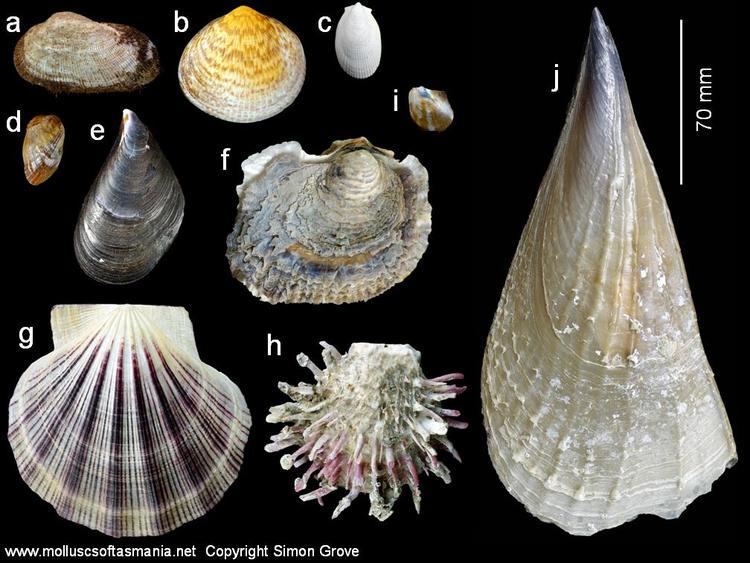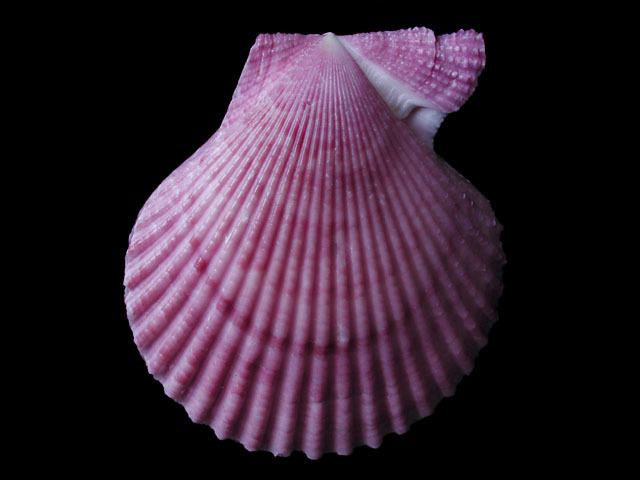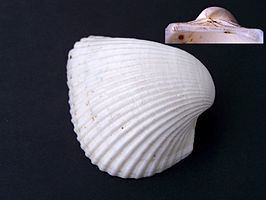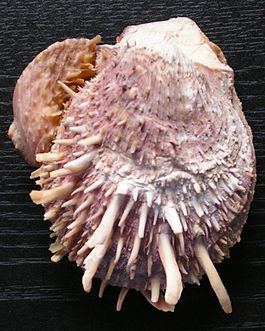Scientific name Pteriomorphia | ||
 | ||
Lower classifications | ||
The Pteriomorphia comprise a subclass of saltwater clams, marine bivalve mollusks. It contains several major orders, including the Arcoida, Ostreoida, Pectinoida, Limoida, Mytiloida, and Pterioida. It also contains some extinct and probably basal families, such as the Evyanidae, Colpomyidae, Bakevelliidae, Cassianellidae, and Lithiotidae.
Contents
- Phylogeny
- 2010 Taxonomy
- Order Arcoida
- Order Ostreoida
- Order Pectinoida
- Order Limoida
- Order Mytiloida
- Order Pterioida
- Fossil orders
- References

This subclass of mollusks has lamellibranch gills, and is epibenthic. Some attach to the substrate using a byssus. The foot is reduced. The mantle margins are not fused. Gills are usually large and assist in feeding. This group includes the well known mussels, scallops, pen shells, and oysters. It also includes the only members of the class Bivalvia to have rudimentary eyes.

Phylogeny

The cladogram is based on molecular phylogeny using mitochondrial (12S, 16S) and nuclear (18S, 28S, and H3) gene markers by Yaron Malkowsky and Annette Klussmann-Kolb in 2012.
2010 Taxonomy
In 2010 a new proposed classification system for the Bivalvia was published by Bieler, Carter & Coan revising the classification of the Bivalvia, including the subclass Pteriomorphia. However, the following taxonomy represents the current accepted arrangement of this subclass according to the World Register of Marine Species
Subclass: Pteriomorphia
Order: Arcoida
(Ark shells and bittersweet shells)
Order: Ostreoida
(True oysters and their allies)
Order: Pectinoida
(Scallops and their allies)
Order: Limoida
(File shells and their allies)
Order: Mytiloida
(Saltwater mussels)
Order: Pterioida
(Winged oysters and their allies)
